Riding Into a New Era
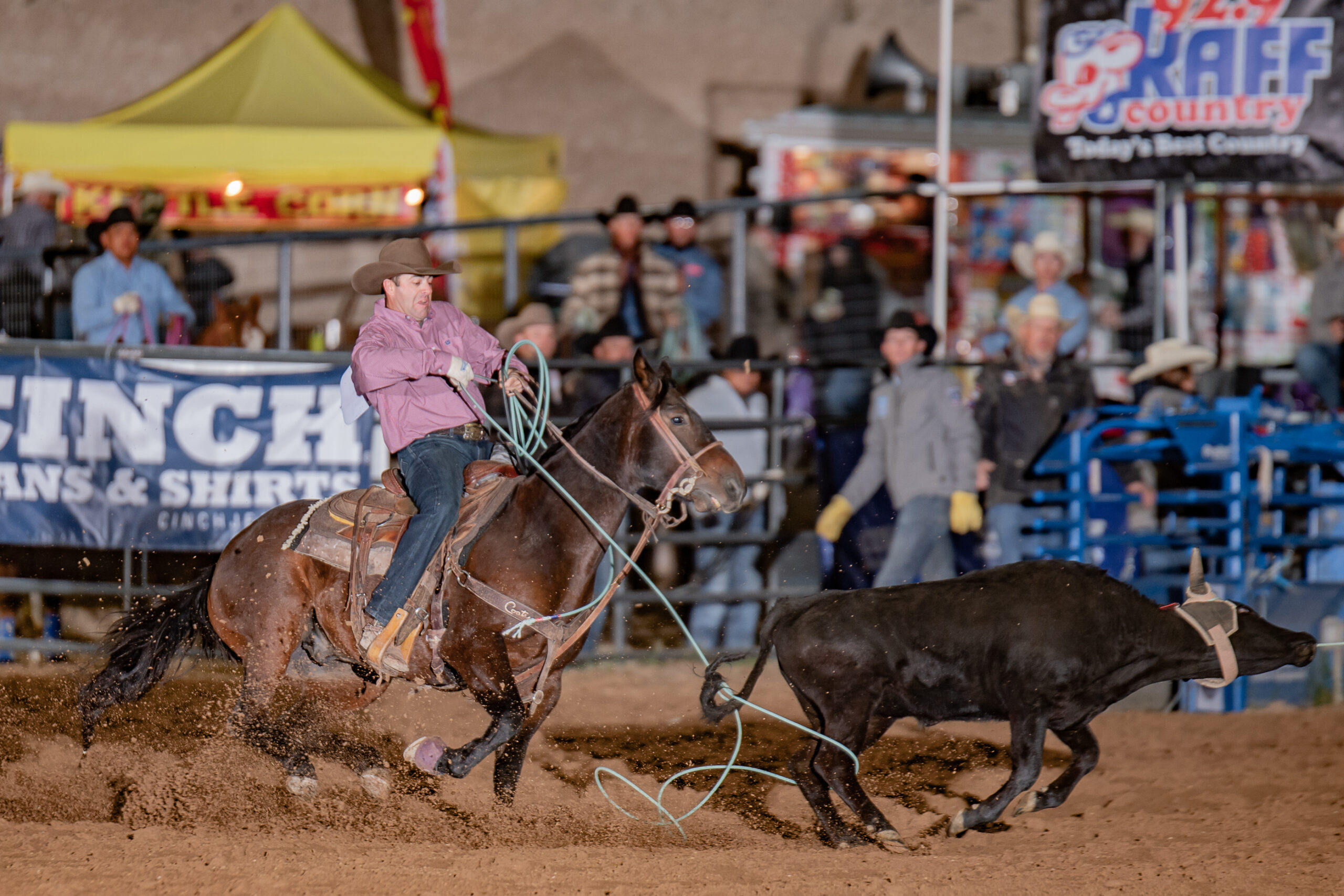
Turquoise Circuit Finals Rodeo Finds Its Home in Cave Creek
Writer Joseph J. Airdo // Photography by Natural Light Photography and Courtesy of TCFR
After four successful years in Camp Verde, the Turquoise Circuit Finals Rodeo is saddling up for a new adventure, one that promises to bring the Southwest’s most prestigious professional rodeo competition directly into the heart of Arizona’s luxury lifestyle corridor.
Come Oct. 31–Nov. 1, Cave Creek Memorial Arena will thunder with the hooves of championship horses and the cheers of spectators as the region’s top cowboys and cowgirls compete for about $175,000 in prize money and the coveted title that can launch careers to the national stage.
“We are so grateful to the Camp Verde Equestrian Center and the Town of Camp Verde for being our home these past four years,” says James Horcasitas, president of the Turquoise Circuit Finals Rodeo. “We felt truly welcomed, and it was an honor to bring the best rodeo athletes from New Mexico and Arizona into such a supportive community. As we look ahead to the future, we’re excited to build on that foundation and bring this incredible event to Cave Creek.”
The relocation represents more than just a change of venue — it’s a strategic move that positions the championship within one of the country’s most robust rodeo markets, where Western heritage isn’t just preserved but actively celebrated year-round.
The Circuit That Started It All
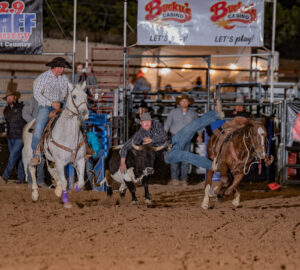


The Turquoise Circuit holds a special place in professional rodeo’s constellation of regional competitions. As one of 13 circuits that comprise the Professional Rodeo Cowboys Association’s system, it encompasses the very geography where American rodeo was born.
“What I always say is that we’re one of the first circuits to really embrace rodeo from the very beginning,” Horcasitas explains. “It’s been a long-standing tradition in our area because New Mexico, Texas, and Arizona — that’s where rodeo originally came from, derived from the vaqueros out of Mexico.”
This isn’t marketing hyperbole. Prescott hosts the world’s oldest rodeo, while Payson claims the world’s longest continuously running rodeo. The Southwest doesn’t just participate in rodeo culture — it created it.
“We hold onto those traditions because they’re near and dear to our hearts,” Horcasitas continues. “What makes us stand out is that we only have about two major metropolitan areas between Arizona and New Mexico in the Turquoise Circuit. We’re mostly rural country, and we still have working ranch cowboys and cowgirls going 24/7.”
This authentic connection to ranching culture gives the Turquoise Circuit a competitive edge in developing talent. Many competitors grew up in ranching families where rodeo skills weren’t performance art but a practical necessity.
For Horcasitas, who serves as both president and full-time rodeo announcer, the competition represents something deeper than athletic achievement.
“I want people to realize that rodeo is an art form, and it’s the world’s greatest art form derived from everyday work,” he reflects. “It’s just like storytelling, which became writing, which became visual art and comic books — it’s a different way to tell a story.”
This perspective transforms how one views the eight traditional events — bareback riding, steer wrestling, team roping, saddle bronc riding, tie-down roping, breakaway roping, barrel racing and bull riding. Each requires not just physical prowess but an almost choreographed precision developed over years of practice.
“Rodeo is one of those things that a lot of states are pushing out,” Horcasitas observes. “They’re not funding it anymore, they’re not backing it. But for so many people, this is their lineage — fourth generation, fifth generation rodeo families. That’s the beginning of America, pretty much.”
The Cave Creek Connection
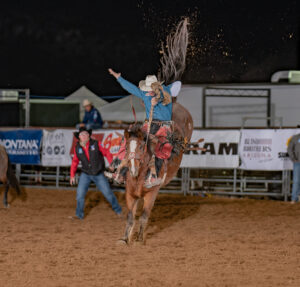


The move to Cave Creek wasn’t arbitrary. The town’s deep-rooted Western identity and established rodeo culture made it a natural fit for the championship’s evolution.
“This is a great honor for Cave Creek,” says Mayor Robert Morris. “The Turquoise Circuit features some of the best cowboys from around the country. With our famous Cave Creek Rodeo Days each March and now the prestigious Turquoise Circuit Finals this fall, Cave Creek is a year-round destination for rodeo fans.”
The integration goes beyond simple venue rental. Horcasitas emphasizes the collaborative approach his organization is taking.
“We didn’t want to negatively affect their rodeo. In fact, we want to help their rodeo succeed,” he explains. “So we’re working with their volunteers and involving them in ways where they can profit from our event and help support their own rodeo as well.”
The town’s enthusiasm extends to practical support. Plans are underway to showcase the competitors throughout the community, with visits to local restaurants, businesses and attractions during rodeo week.
“We want our contestants to be accessible to the community,” Horcasitas says. “We’re planning autograph sessions and encouraging them to go into town on Friday and Saturday. We want them out there, visible, so people know the rodeo is in town.”
Career-Making Competition
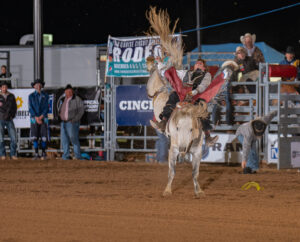


The stakes at TCFR extend far beyond prize money. Success here can transform an athlete’s entire career trajectory, as demonstrated by recent champions such as Caelan Reynolds and Avery Mullins.
Reynolds, a Marana native, exemplifies the circuit’s development pathway.
“He was a junior high school champion bull rider, then a high school champion bull rider for the state of Arizona,” Horcasitas recounts. “He worked his way up, and it took a few years. But he actually took the smart path in bull riding by going level by level.”
When Reynolds won the circuit finals in his first professional year, that victory automatically qualified him for the National Circuit Finals Rodeo — a credential that opened doors to major competitions nationwide.
“When you beat out the best bull riders in your circuit and become the year-end champion, that’s a hell of a feat in the PRCA,” Horcasitas explains. “Then you go compete against the biggest names who were the best in their respective circuits at the national level — that pretty much stamps your card for the rest of your career.”
The formula worked. Reynolds can now enter prestigious events like the San Antonio and Dallas-Fort Worth rodeos based on his circuit finals credentials.
Meanwhile, Mullins represents the culmination of this development system. The 19-year-old won the 2024 circuit finals, advanced to nationals and claimed the national championship — becoming both a circuit and national champion in the same year.
Beyond competition, TCFR emphasizes community engagement and charitable giving. The event’s partnership with the Justin Cowboy Crisis Fund reflects rodeo’s culture of mutual support.
“The Justin Cowboy Crisis Fund is probably one of the greatest organizations I’ve ever encountered,” Horcasitas says. “They do so much for injured cowboys and cowgirls.”
The fund’s relevance became personal when Mullins, the young champion, suffered a back injury during his national championship ride.
“He’s unable to compete right now,” Horcasitas notes. “That’s exactly when the Justin Cowboy Crisis Fund steps in to help contestants like Avery.”
The organization operates on volunteerism, providing “a hand up, not a handout” to injured competitors. TCFR contributes through fundraising events and donated auction items.
Blue-Collar Champions
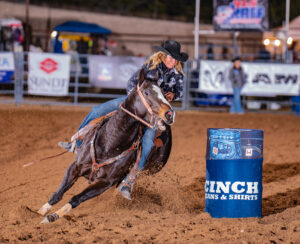


What distinguishes TCFR from major touring rodeos is its unique mix of competitors. While four or five participants travel the national circuit full time, the majority are what Horcasitas calls “blue-collar rodeo competitors.”
“They have real jobs and families. They work full time, but they love rodeo so much that they’re still going down the road, hitting circuit rodeos throughout Arizona and New Mexico,” he explains. “For these blue-collar competitors especially, qualifying for the circuit finals means everything.”
This diversity creates compelling narratives — working professionals pursuing excellence in their sport, weekend warriors competing against full-time athletes and emerging talent seeking breakthrough moments.
The 2025 event carries special significance as the circuit’s 50th anniversary celebration. Horcasitas feels the weight of stewardship for this milestone, but his vision extends beyond single-year success.
“I have this picture in my head where I want to outdo every circuit,” he admits. “Success for me would be making three groups happy: the contestants, the crowd and the sponsors.”
The Cave Creek partnership positions TCFR for sustained growth within a mega market that can support expanded sponsorship, increased attendance and enhanced competitor experiences.
Perhaps most importantly, TCFR represents the preservation of authentic Western culture in an increasingly urbanized world. For Horcasitas, this mission carries deep personal meaning.
“Rodeo is probably one of the best family systems I’ve ever seen in my life,” he reflects. “It really accepts all those who don’t have a family — they find direction, they find drive. A lot of kids whose parents didn’t rodeo go out and do it themselves.”
The sport’s inclusive nature extends to competition itself.
“It’s not very often you go somewhere where somebody competing against you will lend you something to help you beat them in their own sport,” Horcasitas says. “I’ve never seen another sport do that before.”
As the Turquoise Circuit Finals Rodeo prepares to write its next chapter in Cave Creek, it brings more than championship competition to the community. It delivers authentic Western heritage, world-class athleticism and the enduring values of a culture that helped define the American Southwest.
The arena lights will shine bright this fall, illuminating not just athletic achievement but the preservation of an art form that connects modern Arizona to its foundational roots.

